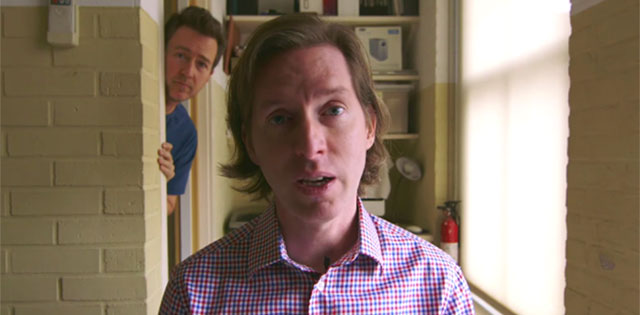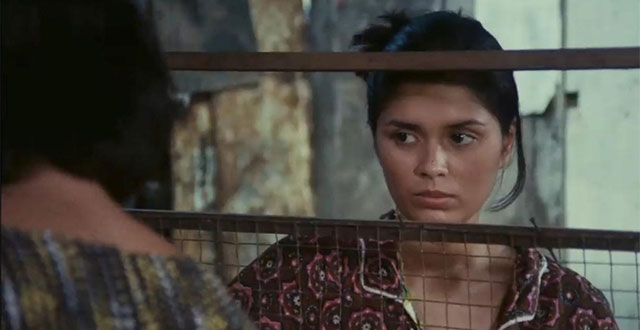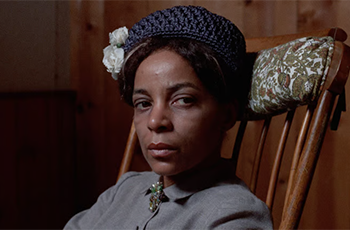News
Wes Anderson Announces Cast of His Film ‘Isle of Dogs’
Dave McNary
Wes Anderson posted a video on Monday to formally announce the large voice cast for his upcoming animated movie “Isle of Dogs.”
The cast includes many of the usual suspects, as well as some unexpected names: Scarlett Johansson, Bill Murray, Edward Norton, Bob Balaban, Tilda Swinton, Frances McDormand, Bryan Cranston, Jeff Goldblum, F. Murray Abraham, Harvey Keitel, Akira Ito, Akira Takayama, Koyu Rankin, Courtney B. Vance, Liev Schreiber and Yoko Ono round out the ensemble.
“Isle of Dogs” is Anderson’s first film since 2014’s “The Grand Budapest Hotel” and his second foray into animation after 2009’s “Fantastic Mr. Fox.” The director’s video announced the cast, confirmed the title and included an appearance from Norton in the background.
Anderson gave a three-second sideways glimpse of Rex, the dog that Norton is voicing. The actor said in response, “I think it’s terrific.” Anderson did not reveal any of the plot details. Reports about the project began emerging late last year.
Production companies are Annapurna Pictures and Indian Paintbrush. The film has not yet been given a release date.
Anderson’s three-minute video also contains a fundraising pitch via a contest with proceeds going to the Film Foundation, Martin Scorsese’s film preservation organization. Anderson has teamed up with the Crowdrise platform for the contest. The winner will receive a trip to London to tour the set and voice a character. Entering the contest requires a $10 donation.
Watch Wes Anderson’s announcement below:
LOUIS XIII Fetches Record Price of US$ 558,000 for Three LOUIS XIII L'ODYSSÉE D'UN ROI Limited Editions Auctioned by Sotheby's
Press Release
PARIS, November 16, 2016 /PRNewswire/
All profits from these LOUIS XIII masterpieces designed by Hermès, Puiforcat and Saint-Louis, will benefit The Film Foundation founded by Martin Scorsese
Each decanter of LOUIS XIII takes four generations of cellar masters over 100 years to craft. It is a unique blend of up to 1,200 eaux-de-vie, the youngest of which is at least 40 years old. A veritable journey through time, it has been present at every milestone in the history of luxury travel. In tribute to this odyssey, LOUIS XIII joined with three of the most prestigious French luxury houses - Hermès, Puiforcat and Saint-Louis - to create three unique masterpieces. To crown their rarity, the LOUIS XIII cognac they house is a tailor-made coupe enriched with a selection of one of the oldest Grande Champagne eaux-de-vie, set aside over the decades by the Cellar Masters.
Inspired by the iconic LOUIS XIII journeys, these objets-d'art have toured the globe, exhibiting their history and savoir-faire at Hermès boutiques, prestige museums and select venues in cultural capitals: Beijing, Shanghai, Hong Kong, New York, Singapore, Paris and London... For one year, LOUIS XIII shared its ode to adventure with the world.
To close this exciting tour, each decanter has been auctioned by Sotheby's. In New York, the Americas edition topped the record for sale of a LOUIS XIII decanter; in Hong Kong in October, the Asia decanter surpassed that total; and at the final sale in London on November 16, the Europe decanter fetched US$ 235,000, bringing the full total to US$ 558,000. The proceeds will benefit The Film Foundation, created by Martin Scorsese in 1990 to restore and preserve cinematic heritage. As part of this unique partnership between Louis XIII and The Film Foundation, several short films were produced, directed by Kent Jones and featuring Scorsese, Wes Anderson, and Ang Lee, who serve on the board of the foundation.
"LOUIS XIII and The Film Foundation are both committed to preserving a cultural legacy, honoring the past while ensuring that films survive into the future. The work of the foundation has helped to restore over 700 films, from the 1880s onward, encompassing well over 100 years of this extraordinary art form. We are grateful for our partnership with LOUIS XIII, and its generous and continuous support for the foundation's mission," said Martin Scorsese.
"We chose to support The Film Foundation in honour of the expertise it takes to create a cultural masterpiece and maintain a savoir-faire over the ages," said Ludovic du Plessis, Global Executive Director of LOUIS XIII.
"Sotheby's was delighted to help raise funds for The Film Foundation through this unique series of auctions, each in our major sales locations," said Jamie Ritchie, Worldwide Head of Sotheby's Wine.
With each Cellar Master passing their legacy on to the next, the LOUIS XIII odyssey continues.
ALCOHOL ABUSE CAN DAMAGE YOUR HEALTH - PLEASE DRINK RESPONSIBLY
Guess What’s Back From the Grave? ‘Night of the Living Dead’
Glenn Kenny
When “Night of the Living Dead” opened in 1968, mostly in grindhouse theaters, Vincent Canby of The New York Times dismissed it in a three-sentence review as “a grainy little movie acted by what appear to be nonprofessional actors, who are besieged in a farmhouse by some other nonprofessional actors who stagger around, stiff-legged, pretending to be flesh-eating ghouls.” He said the filmmakers were “some people in Pittsburgh.”
As it happened, “Living Dead” followed a trajectory rare in American film: Partly fueled by other, more scandalized reviews (including one by a young Roger Ebert, in Reader’s Digest), it went on to cult success, and two years later was recognized as being sufficiently artful to be placed in the permanent collection of the Museum of Modern Art. Its influence, particularly on the now nearly ubiquitous subgenre of zombie horror (“The Walking Dead” on TV, and the movies “28 Days Later,” “World War Z” and “Shaun of the Dead”) is broadly recognized.
But the filmmakers themselves — the “people from Pittsburgh” who formed a company they called Image Ten to make the low-budget movie — have been able to gain from their groundbreaking work only in a limited way. The film’s original distributor, the Walter Reade Organization (named for its founder, a pioneer of art-house distribution), did not file for a new copyright after changing the title from the original “Night of the Flesh Eaters” to “Night of the Living Dead.” That meant the movie went into the public domain almost immediately. As was once the case with Frank Capra’s “It’s a Wonderful Life,” the movie has been subjected to many unofficial, though legal, iterations.
The paradox of the situation has not been lost on its director, George A. Romero. “The fact that people were able to show it for free, that anybody was able to distribute it, did result in lots of people seeing it, and keeping the film alive,” he said in a phone interview. But viewers were too often watching inferior versions. That will change — dramatically, the moviemakers hope — on Saturday, Nov. 5, when the Museum of Modern Art screens a new, and copyrightable, restoration of “Living Dead” as part of its annual restoration and preservation festival, “To Save and Project.”

“We got our baby back,” Gary Streiner, one of the film’s producers, said in a phone interview.
The process, Mr. Streiner said, began in earnest last year, when he; his brother, Russ (who co-produced and also played Johnny in the movie); and the screenwriter John Russo resolved to make a proper inventory of the film’s surviving elements, going through their own archives and the archive of the lab that originally worked on the film.
They turned to MoMA for help, partly because of its history with the film and partly for a practical reason. “Our vaults are in Pennsylvania,” said Katie Trainor, the MoMA’s film collections manager. “Once they had the materials together, they did not want to risk shipping them; they drove them from Pittsburgh. They were literally looking over my shoulder as I was inspecting the materials.”
Mr. Streiner recalled his relief at finding the negative in decent shape: “We could have opened the cans and found dust!”
The restoration was backed by, among others, the Film Foundation, the preservation nonprofit started by the director Martin Scorsese. In an interview, its executive director, Margaret Bodde, said, “The movie had been on a wish list of ours for some time,” and it helped “that we had the director around to consult with, which is too rare in film restoration.”
Mr. Romero said that it had been years since he had seen the film presented in its proper aspect ratio, a squarelike 1.37 to 1; many versions had been cropped to wide-screen proportions. “The restoration is very beautiful, and of course the movie’s pimples do show,” he said. “There’s a copy of the script visible in one of the frames! I won’t tell where. It will be a little challenge for fans to spot it.”

As Ms. Trainor toiled with the filmmakers, she learned what a shoestring Image Ten had worked on. “The car in the opening scene belonged to the Streiners’ mother,” she said. “They borrowed it from her, and she didn’t realize they’d smashed the windshield because they replaced it before returning it to her. The dent they show in the car after it rolls into the tree was there to begin with, though.”
Josh Siegel, curator of film at MoMA, said in an interview, “It’s an unfortunate turn of historical fate that Image Ten created one of the most successful horror films of all time and didn’t reap the benefits of it.”
Over the years, members of the original filmmaking team have tried to mine some profit from their vision, creating alternate cuts, even a colorized version. Because restoration at a certain level has been deemed to create new intellectual property, this is the first time the film as they wanted it seen will, to an extent, belong to them.
Reflecting on what “Living Dead” spawned, Mr. Romero said: “They aren’t really zombie movies; ‘Night’ wasn’t really a zombie movie. I always understood zombies as living beings put under a kind of spell, as in ‘I Walked With a Zombie’ or ‘The Serpent and the Rainbow,’ that kind of thing. Our creatures, and the ones in movies such as ‘28 Days Later’ and ‘World War Z,’ are the dead returning to life.”
Now 76, Mr. Romero has mostly stayed in indie film, creating a big body of work, including five more film variations on the “Living Dead” theme. “I recently realized that I couldn’t get financing for an inexpensive zombie film anymore, because of Brad Pitt,” Mr. Romero said with a chuckle, referring to the actor and producer of “World War Z.” He added, “I’m hoping to get back into the playground, though.”
Sex as a Weapon: Revisiting Lino Brocka’s ‘Insiang,’ 40 years later
Don Jaucian
Manila (CNN Philippines Life) — Cinematheque Centre Manila recently held a five-day retrospective on the National Artist for Film Lino Brocka, called “Lino Brocka: Citizen with a Movie Camera.” Aside from screenings of three restored films, "Insiang," "Maynila sa Kuko ng Liwanag," and "White Slavery," an exhibit was also held featuring photographs of the director, a talk given by Martial Law survivors, and a culminating symposium with the director’s brother, Danilo.
Brocka is known for his gripping takes on the lives of the overlooked and marginalized sectors of society: blue collar workers, prostitutes, bar dancers, security guards, and slum dwellers. During the Martial Law era, Brocka was actively depicting the state of the nation in his films, working on both commercial and arthouse films that spark conversations about what being a Filipino is. Here, we spotlight “Insiang,” which has the distinction of being the first Filipino film at the Cannes Film Festival in 1978. It was later restored in 2015 and was screened at the Cannes Classics section of the film festival in the same year, along with other restored classics such as Orson Welles’s “Citizen Kane,” Carol Reed’s “The Third Man,” and Louis Malle’s “Elevator to the Gallows.” The restoration was done in partnership with the National Film Archives of the Philippines, the Film Development Council of the Philippines, and Martin Scorsese’s World Cinema Project/The Film Foundation.
The world of “Insiang” is as much bewildering as it is suffocating: the makeshift shelters of the slums are put together in a claustrophobic and inescapable fashion. What unfolds before our eyes is an environment too unhindered — a wild beast that grows limbs on its own and swallows the weakest. Houses are stacked beside each other; drunks pass the time in storefronts, beaten down by their own economic constraints; and noise is a constant presence, a reminder that hell can be a place on earth as it is a mythical afterlife full of torture and misery.
And yet, “Insiang” almost plays like a macabre fairy tale: a supposed victim learns how to stand up on her own using cunning tricks to bring the downfall of her oppressors. It helps that Insiang (a gripping performance by Hilda Koronel) appears saint-like: toiling every day to make ends meet, defending her relatives against her mother’s frequent verbal abuse, a virginal lover to Bebot (a cherubic Rez Cortez), her only hope to having a life outside the four walls of her home. Insiang’s fate is a dead-end street, this she knows as much as the miserable existence she has been consigned to, and in time, she realizes that the only way to survive is to become a monster herself.
The film’s lone tyrant is Insiang’s mother, the customary evil witch, with a predatory macho man as her right hand. Brocka’s distrust of the regime is apparent in the film’s setting. The police, counting a brief appearance in the film, is useless. There is no sense of order around these parts, no semblance of a country being governed. No wonder then First Lady Imelda Marcos was against sending the film to the 1978 Cannes Film Festival since it didn’t depict her idea of “the true and the beautiful” Philippines. The film’s producer, Ruby Tiong Tan, recalled to the Film Development Council of the Philippines (FDCP) the struggle to bring “Insiang” out of the country in time for the film festival’s deadline. “Because of the social realities depicted in the film, they [the Board of Censors] did not want it to go to Cannes. It was banned because it wasn’t showing the beautiful parts of Manila. They delayed the censoring process just so that it wouldn’t make it for the Cannes deadline.”
The much-talked about opening scene is a thinly veiled depiction of the plight of the Filipinos under the Martial Law regime: a line of pigs waiting to be slaughtered by the butcher, thrown into boiling water so they can easily be skinned, their squeals of pain echoing inside the theater. Insiang is almost always framed against a window, a prisoner tightly guarded by her crone of a mother, Tonya (the superb Mona Lisa) who only wants her to stay at home, do the laundry, and not lock eyes with any guy on the street. Her mother treats her like a disgraceful reminder of her father, who left them for another woman. “Pareho kayo ng tatay mo! Mahilig!” she yells at Insiang. Tonya tells her daughter it is her duty to serve and work for her because she fed and raised her. And when Insiang buys a new pair of slippers because her old ones are worn out, her mother berates her “Nakakahiya! Ang sabihin mo nagpapaganda ka para mapansin ka ng mga lalake!”
Sex is a valuable weapon in this film, a lethal ammunition that Insiang learns to wield on her own. Tonya’s younger lover Dado (Ruel Vernal), the town thug, keeps her on a leash by habitually satisfying her sexual appetite, even flirting and canoodling in front of Insiang as if to tease her of something she can never have.
Men in this film justify their libidinal tendencies frequently, that part of being a man is submitting, seemingly against their will, to their carnal desires every time they see a girl walking past. “Lalake ako eh? Ano magagawa ko?” Bebot tells Insiang after she refused to have sex with him. Later, after Insiang repeatedly brushed off his advances, Dado rapes her. When Insiang tells her mother, Dado turns things around and tells Tonya that Insiang was the one who seduced her. He tells Tonya, “Alam mo ba kung ano ang ginagawa ng anak mo kapag wala ka dito? Naliligo ng nakahubad! Nakatihaya sa kwarto! Lalake lang ako Tonya, sinong hindi ma-de-demonyo?”
A drum spilling with water mirrors the pent up emotions inside Insiang. The sexual maladies, the torment of living, and the Machiavellian manipulations of her own mother lead her to a path that is both self-actualizing and self-destructive. In the end, Insiang triumphs, yet she is transformed, overwrought by her own infernal machinations. The innocent, like a lamb to the slaughter, is a prey easily corrupted. “Insiang” is allegorical in many ways, something that still rings true today, almost 40 years later, as our own society is still plagued by tyrannical forces bent on overpowering the weak and the poor.




